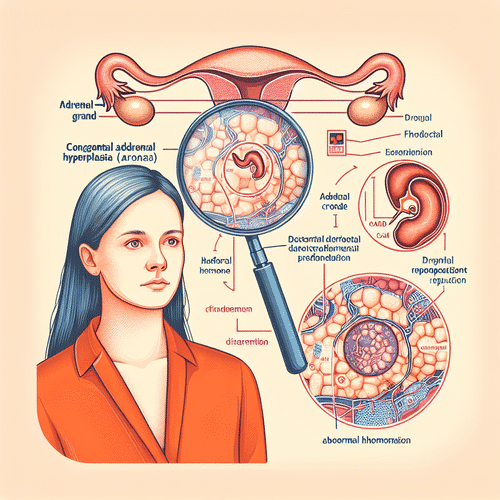Changes in the vulva and vagina are a normal part of life—childbirth, weight fluctuations, hormonal shifts, and simple aging all leave their mark. For some women those changes affect not just how the area looks, but how it feels during exercise, daily activities, or sex. Vaginal restoration (sometimes called vaginal rejuvenation) groups together a range of surgical and non‑surgical techniques that aim to tighten tissues, soften scars, enhance moisture, and revive sensitivity. Used thoughtfully, these treatments can improve comfort, intimacy, and self‑esteem; used carelessly, they can disappoint or even cause harm. The guide walks you through today’s most common options, what they can realistically deliver, and how to choose wisely.
Why Appearance and Sensation Change
• Collagen loss and laxity. Estrogen levels drop after childbirth and around menopause, thinning tissue and reducing elasticity.
• Stretching and scarring. Vaginal delivery can stretch muscles and create perineal scars that pull or itch.
• Dryness and pH shifts. Hormonal changes can lower natural lubrication, causing friction and discomfort during sex.
• External contours. Labia may enlarge, sag, or lose fullness, which some women find visually bothersome or physically irritating in tight clothing.
Understanding which of these factors drives your concern helps a clinician tailor the safest, most effective plan.
Non‑Surgical Options: Energy, Blood, and Topicals
Laser and radio‑frequency (RF) devices.
Fractional CO₂ lasers (e.g., MonaLisa Touch) and RF wands (e.g., ThermiVa, Viveve, EmpowerRF) warm the vaginal wall to stimulate collagen and thicken mucosa. Small studies show improvements in tightness, lubrication, and mild stress incontinence, along with higher scores for sexual satisfaction.(Medical Physics Institute, skincareanarchy.medium.com)
Results are subtle and usually require three sessions plus annual maintenance. The FDA warns that long‑term safety and durability remain unproven, and adverse effects such as burns and chronic pain—though uncommon—have been reported.(Urology Times, Allure)
Platelet‑rich plasma (PRP) or “O‑shot.”
A sample of your blood is spun down, and the growth‑factor‑rich plasma is injected into the vaginal wall or clitoral region. Early data suggest possible benefits for arousal and stress incontinence, but evidence is limited; expect temporary bruising and cost in the $1,000–$2,000 range per treatment.
Dermal fillers for the labia majora.
Hyaluronic‑acid gels can plump deflated outer lips, creating a smoother silhouette and added cushioning for cycling or intercourse. Effects last 8–12 months.
Topical and hormonal therapy.
Prescription vaginal estrogen or DHEA tablets restore moisture and elasticity, often used with over‑the‑counter moisturizers. For many post‑menopausal women, hormones provide as much relief as high‑tech devices at a fraction of the cost.
Surgical Approaches When More Change Is Needed
Labiaplasty.
Trims or reshapes protruding inner labia to reduce tugging and improve symmetry. Healing takes two to four weeks, with sex and strenuous exercise avoided for about six weeks.
Vaginoplasty (posterior colporrhaphy).
Tightens the vaginal canal by bringing stretched muscles back to the midline and removing excess mucosa. It can increase friction during intercourse but also carries the longest downtime (up to eight weeks) and highest cost.
Perineoplasty.
Focuses on the perineal entrance, smoothing scar tissue and reinforcing support between the vagina and rectum—often combined with vaginoplasty.
All surgeries should be performed by board‑certified gynecologic or plastic surgeons experienced in pelvic procedures. Smokers, women planning future vaginal births, or anyone with uncontrolled medical conditions may be advised to postpone.
How Restoration Supports Intimacy and Self‑Confidence
- Improved tactile sensation. Firmer tissue and better lubrication can heighten pleasure for both partners.
- Reduced pain. Removing scars or treating dryness may make penetration comfortable again.
- Enhanced appearance. A labia that no longer chafes or a canal that feels “hugging” rather than “gaping” can translate into greater body confidence.
- Psychological uplift. Knowing you’ve addressed a long‑standing concern often boosts mood and sexual assertiveness, benefits echoed across multiple small clinical trials of laser and RF therapy.(Medical Physics Institute)
Best Practices for Safe, Satisfying Results
- Start with a thorough exam. Rule out infections, dermatologic conditions, or pelvic‑floor dysfunction that could be fixed with simpler therapies like physiotherapy or topical medication.
- Verify credentials. Choose clinicians who are board‑certified in OB‑GYN, urogynecology, or plastic surgery and can show peer‑reviewed outcome data.
- Ask about evidence. For any energy device, request published studies specific to that platform—not just testimonials.
- Set realistic goals. Non‑surgical treatments create millimeter‑level tightening, not dramatic reshaping. Surgery yields bigger changes but also scars and downtime.
- Plan your calendar. Schedule around life events—no intercourse, tampons, pools, or strenuous workouts for the first two to eight weeks depending on the procedure.
- Protect results. Maintain pelvic‑floor strength with Kegels, manage weight, and use silicone scar gel post‑surgery if recommended.
Red Flags and When to Walk Away
• Promises of “permanent” tightening from a single laser session.
• Clinics unwilling to discuss potential adverse events or to refer you for second opinions.
• Cash‑only practices pushing pricey packages without medical necessity documentation.
• Pressure to skip a Pap smear or routine gynecologic care because “the device fixes everything.”
Remember: marketing language often outpaces clinical proof. If something sounds too good to be true, it probably is.
Key Takeaways
Vaginal restoration can visibly refine the labia, subtly tighten tissues, ease dryness, and revive sexual confidence—but only when chosen for the right reasons, delivered by qualified professionals, and supported by healthy lifestyle habits. Non‑surgical lasers, RF, and PRP appeal to women seeking minimal downtime; labiaplasty and vaginoplasty offer more dramatic reshaping at the cost of longer recovery.
Whatever path you pick, an honest conversation with a trusted clinician is your best safeguard. Armed with evidence and clear expectations, you can decide whether a small tweak or a surgical overhaul will help you look, feel, and love your intimate self with renewed assurance.

